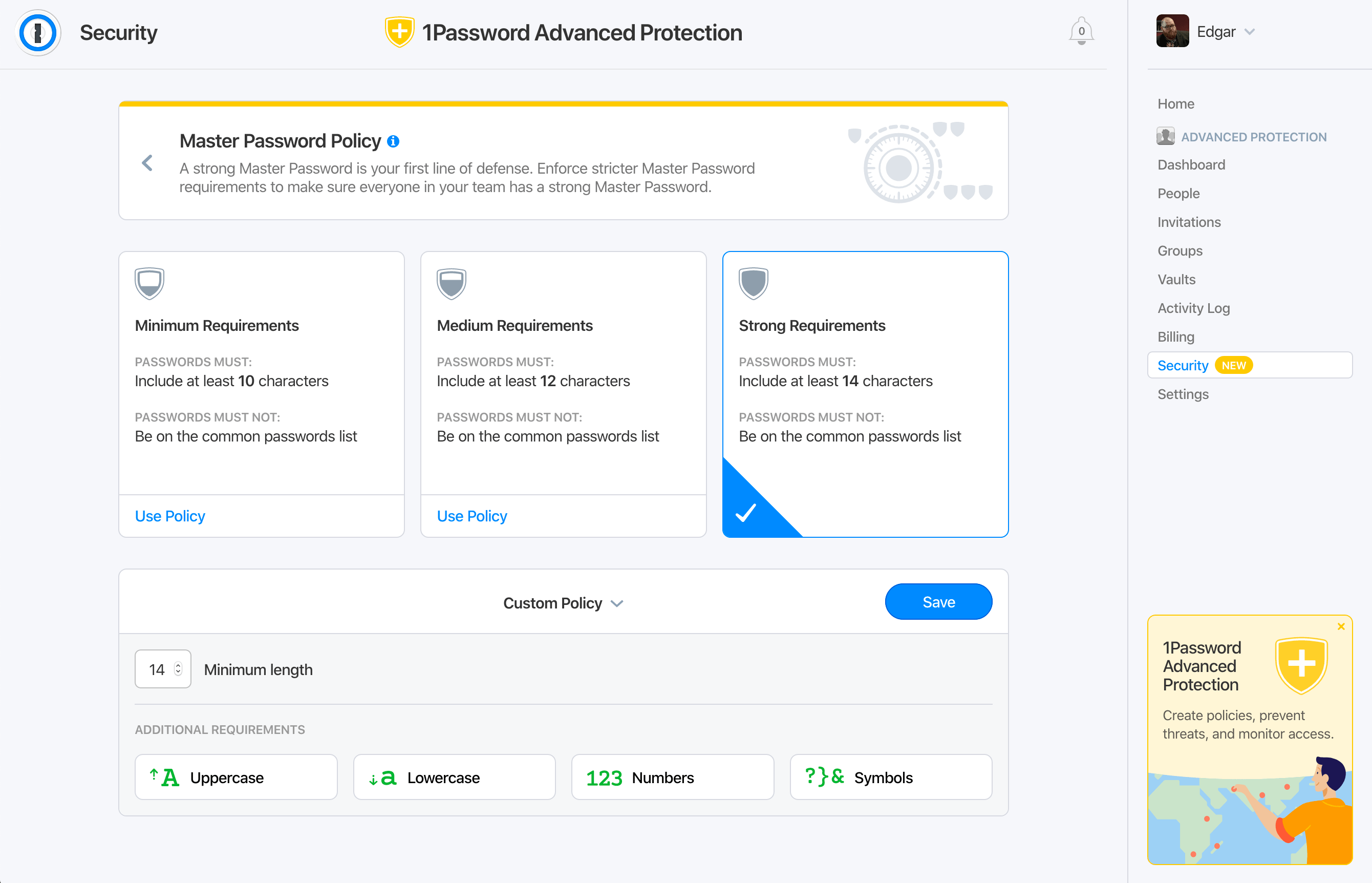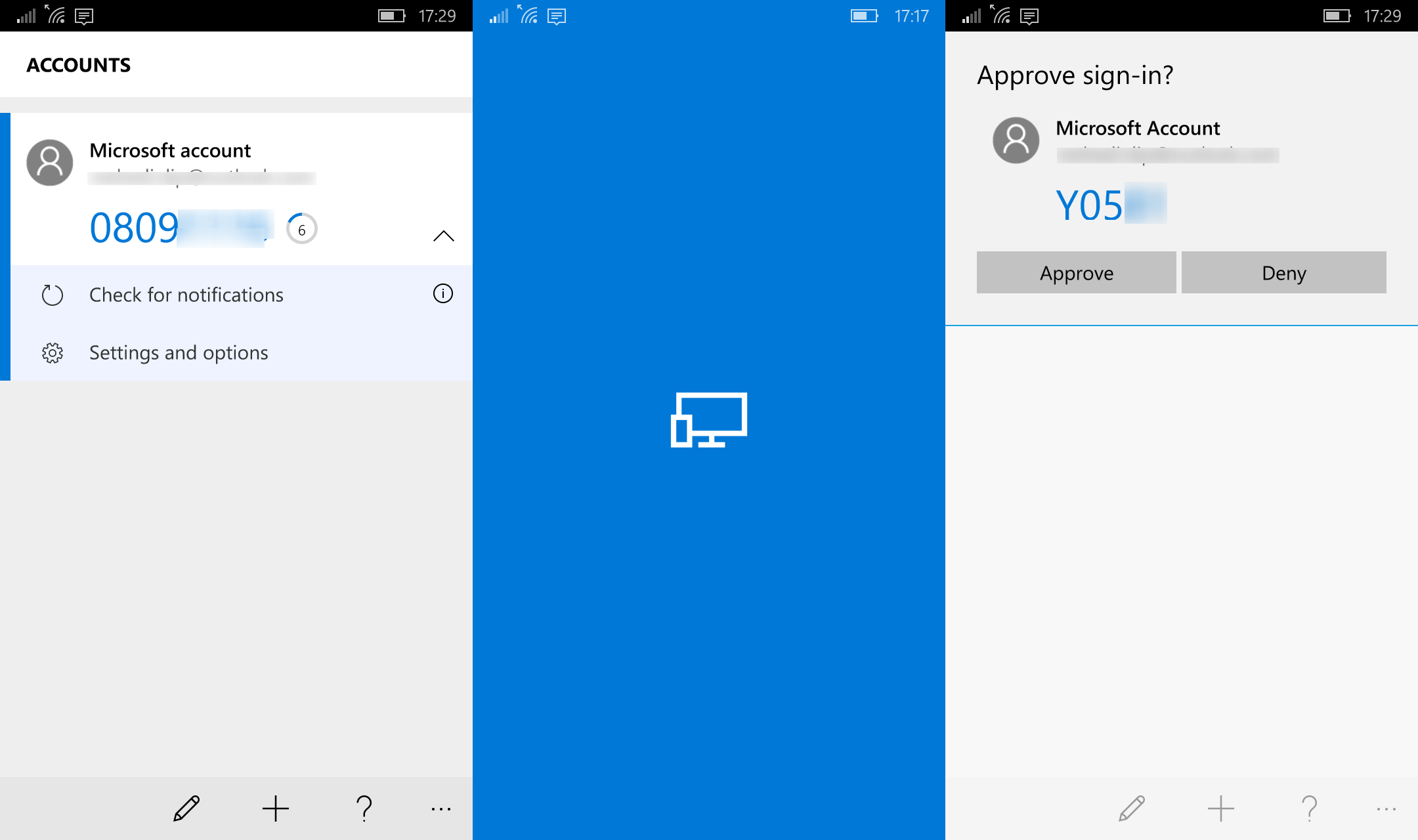The One-Time Password (OTP) authentication method for multi-factor authentication is another authentication method that is offered by Microsoft that you can use when authenticating your log in. In short, when you log into Office 365, you will simply access your Authenticator app on your mobile device and will authenticate your Office 365 login with the temporary password that is offered to you on the app. The instructions below will guide you on setting up the One-Time Password authentication method.
A password manager, digital vault, form filler and secure digital wallet. 1Password remembers all your passwords for you to help keep account information safe. A One-Time Password (OTP) is a password that is valid for only one login session or access transaction. OTPs, used as part of 2FA (Two-Factor Authentication), offer an advantage in that they’re not vulnerable to replay attacks. This means a potential intruder, who manages to record an OTP already used, will not be able to. Microsoft Authenticator can now provide password management and autofill capabilities on mobile, so you can protect synced passwords with multi-factor authentication (MFA), and using the Microsoft. Add multiple accounts. Protect all of your accounts with two-step verification. The app also helps you secure all of your online accounts by using the industry standard time-based OTP (one-time password.
Note: At this time, in order to set up the One-Time Password method, you will already need to have MFA set up using the Authenticator app method. To learn how to set up MFA with the Authenticator method, please read the following linked article: How to Set up Multi-Factor Authentication Using the Mobile App
- Open an internet browser and navigate to account.illinoisstate.edu.
- Log in with your ULID and password.
- Upon logging in, click the Manage button next to Multi-Factor Authentication. (See Figure 1)

Figure 1:
- Press the Manage Devices button in the green box. This will only appear if you already have MFA set up. (See Figure 2)
Figure 2:
- You may be prompted to log in using your ISU email account, or even authenticate your log in with your preferred MFA method (Authenticator app, phone call, text, etc.).
- Once you are in the “Security Info” tab, you should see the Default Sign in Method section with the Authenticator app - notification method as your main method. To change it to One-Time Password, click Change and you will then change your method to Authenticator App or Hardware Token - Code in the drop down menu that appears. (See Figures 3 and 4)
Figure 3:
Figure 4:
- Click Confirm to save your change. (See Figure 5)
Figure 5:
- You will see a confirmation message pop up at the top-right corner of your screen. You have successfully changed your authentication method to the One-Time Password option. (See Figure 6)
Figure 6:
- To learn how to sign in with the One-Time Password when prompted, please read the following linked article: How to Sign in Using Multi-Factor Authentication
Related Articles
-->The Microsoft Authenticator app can be used to sign in to any Azure AD account without using a password. Microsoft Authenticator uses key-based authentication to enable a user credential that is tied to a device, where the device uses a PIN or biometric. Windows Hello for Business uses a similar technology.
This authentication technology can be used on any device platform, including mobile. This technology can also be used with any app or website that integrates with Microsoft Authentication Libraries.
People who enabled phone sign-in from the Microsoft Authenticator app see a message that asks them to tap a number in their app. No username or password is asked for. To complete the sign-in process in the app, a user must next take the following actions:
- Match the number.
- Choose Approve.
- Provide their PIN or biometric.
Prerequisites
To use passwordless phone sign-in with the Microsoft Authenticator app, the following prerequisites must be met:
- Azure AD Multi-Factor Authentication, with push notifications allowed as a verification method.
- Latest version of Microsoft Authenticator installed on devices running iOS 8.0 or greater, or Android 6.0 or greater.
- The device on which the Microsoft Authenticator app is installed must be registered within the Azure AD tenant to an individual user.
Note
If you enabled Microsoft Authenticator passwordless sign-in using Azure AD PowerShell, it was enabled for your entire directory. If you enable using this new method, it supercedes the PowerShell policy. We recommend you enable for all users in your tenant via the new Authentication Methods menu, otherwise users not in the new policy are no longer be able to sign in without a password.
Enable passwordless authentication methods
To use passwordless authentication in Azure AD, first enable the combined registration experience, then enable users for the password less method.
Enable the combined registration experience
Registration features for passwordless authentication methods rely on the combined registration feature. To let users complete the combined registration themselves, follow the steps to enable combined security information registration.
Enable passwordless phone sign-in authentication methods
Azure AD lets you choose which authentication methods can be used during the sign-in process. Users then register for the methods they'd like to use.
To enable the authentication method for passwordless phone sign-in, complete the following steps:
- Sign in to the Azure portal with a global administrator account.
- Search for and select Azure Active Directory, then browse to Security > Authentication methods > Policies.
- Under Microsoft Authenticator, choose the following options:
- Enable - Yes or No
- Target - All users or Select users
- Each added group or user is enabled by default to use Microsoft Authenticator in both passwordless and push notification modes ('Any' mode). To change this, for each row:
- Browse to ... > Configure.
- For Authentication mode - Any, Passwordless, or Push
- To apply the new policy, select Save.
User registration and management of Microsoft Authenticator
Users register themselves for the passwordless authentication method of Azure AD by using the following steps:
- Browse to https://aka.ms/mysecurityinfo.
- Sign in, then add the Authenticator app by selecting Add method > Authenticator app, then Add.
- Follow the instructions to install and configure the Microsoft Authenticator app on your device.
- Select Done to complete Authenticator configuration.
- In Microsoft Authenticator, choose Enable phone sign-in from the drop-down menu for the account registered.
- Follow the instructions in the app to finish registering the account for passwordless phone sign-in.
An organization can direct its users to sign in with their phones, without using a password. For further assistance configuring the Microsoft Authenticator app and enabling phone sign-in, see Sign in to your accounts using the Microsoft Authenticator app.
Note
Users who aren't allowed by policy to use phone sign-in are no longer able to enable it within the Microsoft Authenticator app.
Sign in with passwordless credential
A user can start to utilize passwordless sign-in after all the following actions are completed:
- An admin has enabled the user's tenant.
- The user has updated her Microsoft Authenticator app to enable phone sign-in.
The first time a user starts the phone sign-in process, the user performs the following steps:
- Enters her name at the sign-in page.
- Selects Next.
- If necessary, selects Other ways to sign in.
- Selects Approve a request on my Microsoft Authenticator app.
The user is then presented with a number. The app prompts the user to authenticate by selecting the appropriate number, instead of by entering a password.
After the user has utilized passwordless phone sign-in, the app continues to guide the user through this method. However, the user will see the option to choose another method.

Known Issues
One Password Authenticator Software
The following known issues exist.
Not seeing option for passwordless phone sign-in
In one scenario, a user can have an unanswered passwordless phone sign-in verification that is pending. Yet the user might attempt to sign in again. When this happens, the user might see only the option to enter a password.
To resolve this scenario, the following steps can be used:
- Open the Microsoft Authenticator app.
- Respond to any notification prompts.
Then the user can continue to utilize passwordless phone sign-in.
Federated Accounts
One Password Authenticator Pro

When a user has enabled any passwordless credential, the Azure AD login process stops using the login_hint. Therefore the process no longer accelerates the user toward a federated login location.
This logic generally prevents a user in a hybrid tenant from being directed to Active Directory Federated Services (AD FS) for sign-in verification. However, the user retains the option of clicking Use your password instead.
Azure MFA server
An end user can be enabled for multi-factor authentication (MFA), through an on-premises Azure MFA server. The user can still create and utilize a single passwordless phone sign-in credential.
If the user attempts to upgrade multiple installations (5+) of the Microsoft Authenticator app with the passwordless phone sign-in credential, this change might result in an error.
Device registration
Before you can create this new strong credential, there are prerequisites. One prerequisite is that the device on which the Microsoft Authenticator app is installed must be registered within the Azure AD tenant to an individual user.
One Password Authenticator Download
Currently, a device can only be registered in a single tenant. This limit means that only one work or school account in the Microsoft Authenticator app can be enabled for phone sign-in.
Microsoft Password Authenticator
Note
Passwordstate One Time Password Authenticator
Device registration is not the same as device management or mobile device management (MDM). Device registration only associates a device ID and a user ID together, in the Azure AD directory.

Next steps
One Password Authenticator Windows 10
To learn about Azure AD authentication and passwordless methods, see the following articles:
